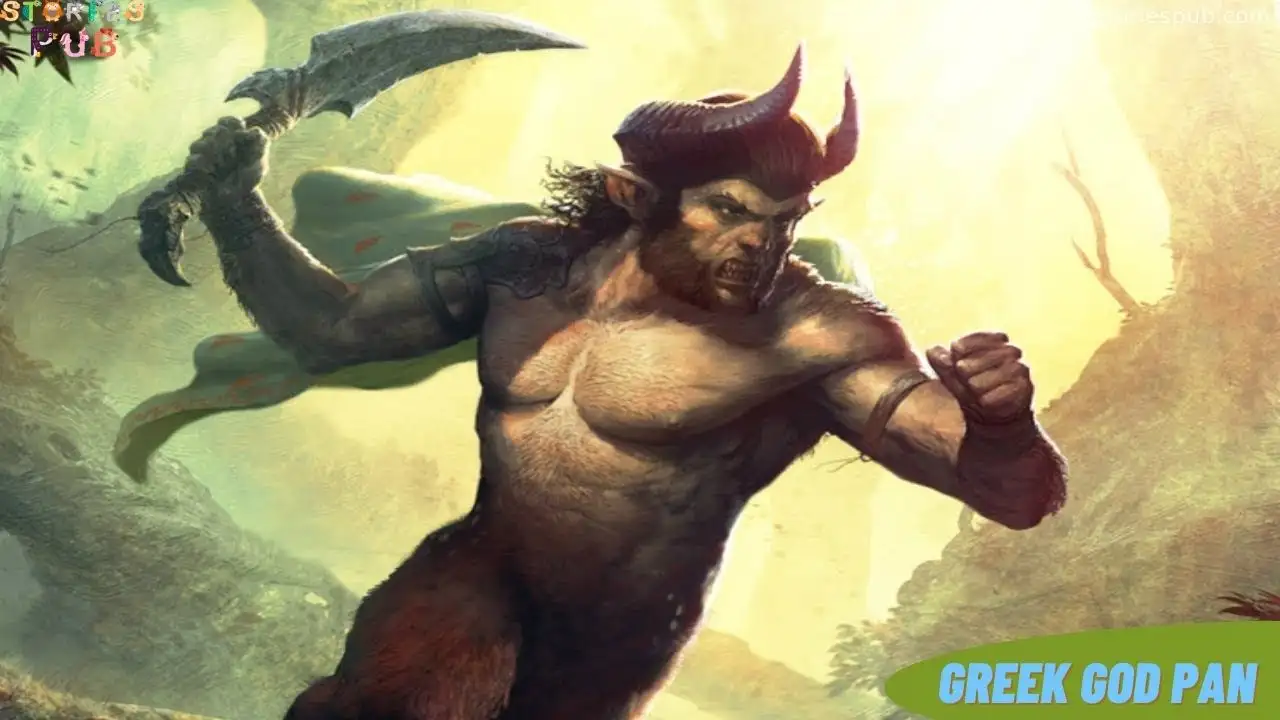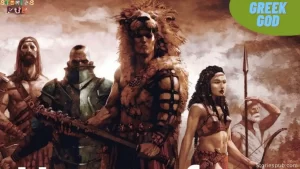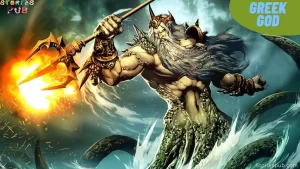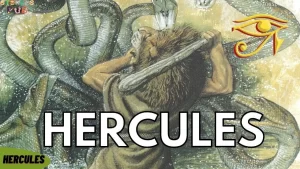Unleashing the Wild: A Guide to the Greek God Pan
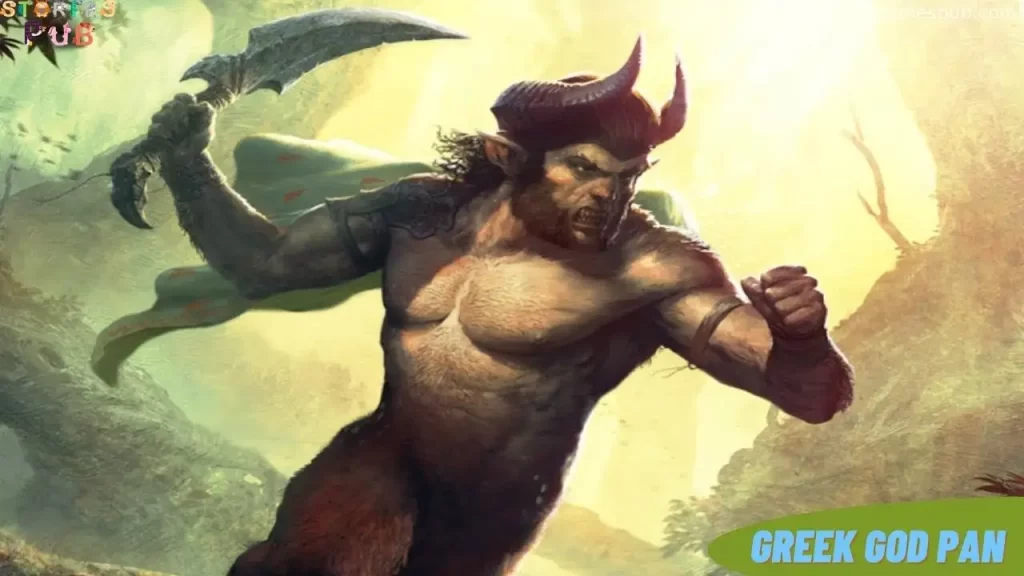
Pan was the Greek God of shepherds, hunters, and rustic music. He was often depicted as a satyr, a creature with the upper body of a human and the lower body of a goat, and was associated with fertility, sexual activity, and the wild.
According to mythology, Pan was the son of Hermes, the messenger of the Gods, and the nymph Dryope. He was known for his musical ability, and his pipes, called the pan flute, were said to have the power to calm even the wildest of beasts.
Pan was a popular deity in the rural areas of ancient Greece and was often worshipped by shepherds and hunters who sought his protection and blessings. He was also linked to the God Dionysus, the God of wine and partying, and was sometimes part of his group.
You would also like to Read List of Greek Goddesses
Despite his popularity, Pan was not one of the twelve Olympian Gods who lived on Mount Olympus. Even so, many people in ancient Greece still revered and respected him, and his cult lasted well into the Roman era.
Pan was the God of shepherds and hunters, but he was also seen as a representation of the unpredictable and chaotic forces of nature. He was sometimes called upon in battle to make an enemy panic and run away.
Pan God’s family Background
According to Greek mythology, Pan was the son of Hermes and the nymph Dryope. He did not have a wife but was known for his many romantic pursuits and sexual conquests. He was often depicted as a sexually charged figure and was associated with fertility, desire, and the wild.
As a rustic deity, Pan did not have a traditional family structure like the Gods on Mount Olympus, who were usually depicted as married with children. However, in some myths, he was said to have fathered children with various nymphs and mortal women.
You would also like to Read Tales of Ancient Greek Heroes
One well-known myth involving Pan and his offspring concerns the nymph Syrinx, who was pursued by the God but managed to escape by transforming into a reed. Pan, in his frustration, cut the reeds and made them into the first pan flute, which he named after Syrinx.
In a different myth, Pan was after the nymph Echo, but she got away from him by talking nonstop until Hermes came to help her.
Pan didn’t have a formal family, but he was a well-liked and respected God in ancient Greece. He was often shown with nymphs and other woodland creatures, who were symbols of the natural world he ruled over, to show that he was in charge of nature.
Pan’s Powers
In Greek mythology, Pan was considered to have several powers and abilities. Some of these include:
Music: Pan was known for his musical abilities and was often depicted playing the pan flute, a musical instrument he was said to have invented. The sound of his pipes was said to have the power to calm even the wildest of beasts and bring peace to the minds of listeners.
Fishing and hunting: Since Pan was the God of shepherds and hunters, he was linked to these activities and was thought to be able to help hunters find game.
You would also like to Read List of Greek God
Protection of Flocks: Pan was thought to protect flocks of sheep, goats, and other domesticated animals because he was the patron saint of shepherds.
Panic and Fear: In addition to his more helpful powers, Pan was also seen as a symbol of the chaotic and unpredictable forces of nature, and his name was sometimes used in battle to make enemies panic and run away.
Fertility: Since Pan was a God of the countryside, he was linked to fertility and was sometimes worshipped with the Goddesses of agriculture and harvest.
These powers show that Pan is a God of the countryside and nature, and that he is connected to the forces of nature, the wild, and the hunt.
Pan’s weakness
In Greek mythology, Pan was not typically depicted as having any particular weaknesses. However, he was susceptible to the whims and desires of the Gods on Mount Olympus, just like all other Greek Gods, and their actions could have an impact on him.
In some myths, Pan was portrayed as a somewhat comical figure who was easily frightened and prone to making mistakes. For example, in one myth, he was said to have been afraid of his own reflection, thinking that it was a rival.
But these weren’t the only ways Pan was pictured. He was often shown as a powerful and scary God who was in charge of the unpredictable and chaotic forces of nature.
You would also like to Read Zagreus Story
In general, Pan was seen as a God of the countryside. He was more connected to nature than the Gods of Mount Olympus, and he didn’t have the same limits and weaknesses as the more “civilized” Gods of the Greek pantheon.
Pan is the God of which power?
Pan is widely known as the Greek God of the wild, and there are several myths and stories that reflect this aspect of his personality. One of the most famous stories involving Pan and the wild is the story of how he became the God of panic.
According to the myth, one day while Pan was out hunting, he came across the monster Typhon and was so frightened by its appearance that he let out a loud and piercing shout. The shout was heard all over the countryside, causing all the animals to run away in fear and all the people to panic.
Zeus, the king of the Gods, hearing the commotion, went to investigate and found that the cause was Pan. Zeus was impressed by Pan’s ability to make so many people afraid that he made Pan the God of panic and terror from then on.
You would also like to Read Mighty Hecatoncheires Story
This story reflects Pan’s association with the wild and the unpredictable forces of nature. It also highlights his ability to evoke fear and anxiety and to bring chaos and disorder to the world.
Some of the best-known Pan Stories:
The Birth of Pan: This myth tells the story of how Pan came to be. According to the myth, Pan was the son of the God Hermes and the nymph Dryope. When Dryope was still pregnant, she was visited by the Goddess Hera, who was angry that Dryope had given birth to a child by another God. In her wrath, Hera caused Dryope to give premature birth to a half-goat, half-human creature who was named Pan.
The Pursuit of Syrinx: This myth tells the story of how Pan came to invent the pan flute. According to the myth, Pan was in love with the nymph Syrinx, who refused his advances. In his frustration, Pan chased her through the forest until she transformed into a reed. Disappointed, Pan cut the reeds and made them into the first pan flute, which he named after Syrinx.
You would also like to Read Aeneas: The Hero of Troy
The Echo and Narcissus: In this myth, Pan was pursuing the nymph Echo, who was in love with the beautiful Narcissus. Echo could only repeat herself, so she was able to get away from Pan by talking nonstop until Hermes stepped in to help her.
The Battle of the Gods and the Giants: In this myth, Pan played a role in the battle between the Gods and the giants. According to the myth, when the Giants attacked the Gods on Mount Olympus, Pan rallied the forces of nature and helped the Gods defeat the Giants and protect the heavens.
Pan-Roman Name
In Roman mythology, Pan was known as Faunus. The Roman Faunus was largely similar to the Greek God Pan and was associated with the same aspects of nature, the countryside, and rustic music.
Like Pan, Faunus was often shown as a creature that was half-human and half-goat. He was also seen as a powerful and feared God who could bless or curse the land and its people.
You would also like to Read Creatures of Ancient Greece
In addition to his role as the God of the countryside, Faunus was also associated with prophecy and was considered a powerful diviner of the future. He was often pictured as an old, wise man who could see into the future and tell those who came to him for advice how the natural world worked.
In Roman religion, Faunus was widely worshipped and was considered one of the most important rural deities. His cult was especially strong in the countryside, where he was seen as the protector of flocks and the patron saint of hunters and shepherds.
Pan God Symbol
Some of the most common symbols associated with Pan include:
The Pan Flute: As the God of rustic music, Pan was often depicted playing the pan flute, which was said to have been invented by him. The pan flute was a sign of how good he was at music and how much he liked the natural world.
The Goat: As a satyr, Pan was often depicted with the lower body of a goat, which was a symbol of his wild and untamed nature. The goat also showed that he was connected to sexuality and fertility, and that he had the power to bless and curse the land and its people.
The Pinecone: The pinecone was another common symbol associated with Pan, as it was believed to be a symbol of fertility and renewal. Pinecones were often used to decorate shrines and temples that were dedicated to the God Pan. They were also used in different rituals and gifts to the God.
The Shepherds’ Crook: As the God of shepherds, Pan was often shown holding a shepherds’ crook. This was a sign of his role as the protector of flocks and the patron of sheepherders.
Along with other symbols, these ones showed different parts of Pan’s personality and the role he played in ancient Greek mythology as a God of nature, the hunt, and the rural countryside.
Pan God’s famous war
According to the myth, when the Giants attacked the Gods on Mount Olympus, Pan rallied the forces of nature and helped the Gods defeat the Giants and protect the heavens. This story shows how strong and scary Pan can be, as well as how he can protect nature and the rural countryside.
Pan God’s physical appearance
In ancient Greek mythology, Pan was often depicted as a half-human, half-goat creature known as a satyr. He had the upper body of a handsome young man, while his lower body was that of a goat, complete with goat legs and horns.
Pan was known for his wild and untamed nature and was often depicted as a lively and mischievous figure with a ruddy complexion and a cheerful expression. He was also often depicted with a bushy beard and long hair, which added to his rustic and wild appearance.
In addition to his goat-like legs, Pan was also sometimes depicted carrying a shepherd’s crook, which was a symbol of his role as the patron saint of shepherds and flocks. He was also often shown playing the pan flute, which he was said to have invented. This was a way to show that he liked country music and the outdoors.
Overall, Pan’s appearance showed that he was a God who was in charge of the wild and untamed parts of nature. It also showed that he was a God of the countryside and the patron of shepherds, hunters, and musicians.
Hey kids, how much did you like Unleashing the Wild: A Guide to the Greek God Pan? Please share your view in the comment box. Also, please share this story with your friends on social media so they can also enjoy it, and for more such stories, please bookmark storiespub.com.
Check out other stories that we have:


